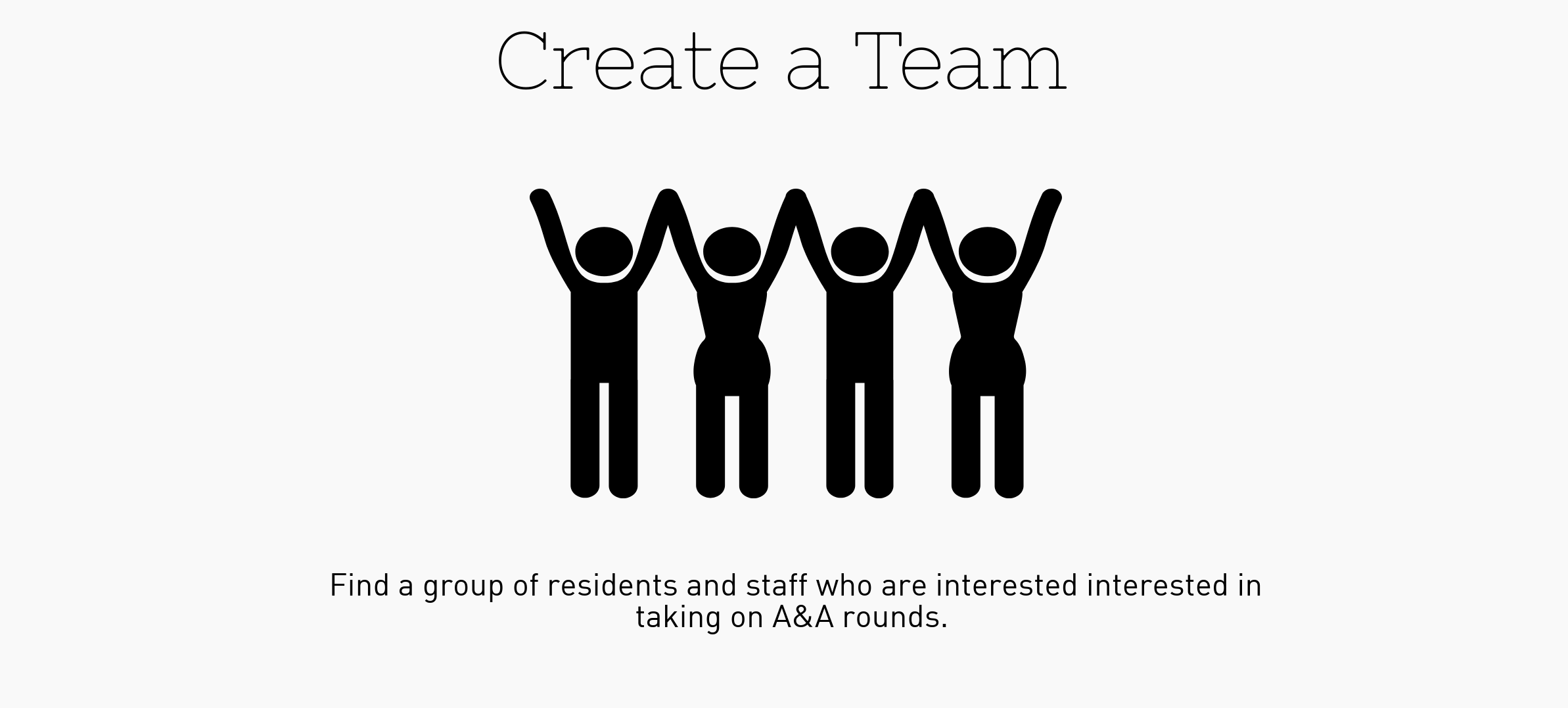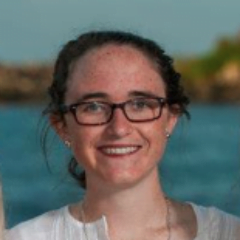Editor’s note: This post was collaboratively written by the coordinators of Amazing & Awesome Rounds at Queen’s. Eve Purdy, Chris Meyer, and Elizabeth Blackmore.
You may have seen multiple postings on twitter and even an article in Annals of Emergency Medicine recently related to “Amazing and Awesome rounds.”1 A number of Canadian and international institutions are trying out this positive, spin on case reviews. At Queen’s University we have paired Amazing and Awesome (A&A) rounds with our traditional Morbidity and Mortality (M&M) rounds, recognizing that there are also opportunities for learning from cases where processes and outcomes are excellent. The goal is to identify and amplify successful practice behaviours while feeling good about the care provided by our group.
The Concept of Positive Deviance for Organizational Change
Medicine may be late to the party in recognizing the significant advantages that come from evaluating and reflecting on excellence. Other sectors have learned that there is value in studying solutions that already exist
Jerry Sternin, the visionary behind positive deviance theory, implemented the study of exceptionality to support organizational and community change in a variety of contexts but the concept’s roots are in international development. The concept is based on the idea that by identifying individuals thriving, despite facing the same constraints and challenges as others in their community, we can begin to understand what makes them different. Positive deviance recognizes that there are people within communities that already have solutions to the toughest issues. For example, Sternin and his colleagues at Save the Children examined feeding behaviours of healthy but equally disadvantaged children in an area otherwise ravaged by malnutrition and then built nutrition programs based on this positive deviance. They were able to reduce severe malnutrition by 74%.2 Unsurprisingly, this approach has since been adapted by business organizations looking to optimize performance. Identification, recognition and support towards the emulation of excellence within one’s organization mitigates the need to start new programs or bring in new resources. It can be efficient and is often well received by members of the community because it inherently comes from within.
For more information on positive deviance check out these resources:
- Positive Deviance and Unlikely Innovators
- A Framework for the Study of Positive Deviance in Organizations
- The Power of Positive Deviance
Applying Positive Deviance to Medicine
In medicine we are good at fixating on things gone wrong. In fact, we could describe a large part of our job as doing just that. This comfort is rooted in our education – we devotedly learn about all the ways that the body can go awry and then spend the majority of our clinical time interacting with this aberrance. We desperately search for a problem, and feel more comfortable when we find one. We are grateful if it is an issue we can fix. As we progress through our training and careers we make countless decisions and are involved in thousands of cases. The scenarios that tend to loop in our minds – the ones that keep us up at night – are the ones gone wrong. We are experts in navigating negative deviance as it relates to the physiology of our patients and our own practice of medicine. Physicians learn to be faithful stewards of failing bodies and dutiful curators of their own mistakes.
Morbidity and mortality (M&M) rounds, which most medical and surgical departments hold on a regular basis, are evidence of this reality. The rituals of a group often reflect the group’s culture and in turn, have the ability to shape the cultural norm over time. Over the past number of years many institutions’ M&M rounds have evolved from a shame-based, blame-oriented, exercise of ridicule to be more systems-based (also known as a ‘just’ approach). For more information about this style of M&M rounds please read “The Ottawa M&M Model” guide and a recent MEdICs Case. This shift likely also represents a welcome evolution in the way we treat our colleagues and ourselves. There is undoubtedly still value in continuing with the thoughtful ritual of M&M rounds done right, to examine cases gone wrong. We also believe that we can apply the concept of positive deviance to a new ceremony, A&A rounds, with the hopes of shaping beliefs and behaviours of those in attendance in a fresh way. This approach has been inspired by the actions and ideas of others, including Dr. Simon Carley, Dr. Rebecca Lawton and Dr. Lisa Fischer. We are grateful to the Department of Emergency Medicine at Queen’s for giving us the opportunity to try something new and for the patience of our colleagues while we try to optimize this work in progress.
Positive deviance for A&A rounds relies on active participation of a community to identify behaviours and processes that lead to exceptional results. In medicine, we recognize that it is likely that we all engage in such positive behaviours at different times throughout our shifts and throughout our careers. At different times and for different reasons we are all the role models. We are not looking to deify any one person or group, rather identify, understand, highlight, share, and encourage specific behaviours and conditions that lead to excellence in challenging circumstances. Along the way we do congratulate and celebrate work done well by individuals and groups, with the secondary goal of boosting morale.
How we run our Amazing & Awesome Rounds
Who
A team of two residents (Eve and Chris) and one staff (Dr. Blackmore) are responsible for coordinating A&A rounds. We seek input from staff and residents about suitable cases. Our rounds run quarterly so we collect potential cases in the three months leading up. Anyone from junior resident to department head can  suggest a case to us. We meet 1-2 weeks before rounds to choose the case(s). Once cases are identified we gain consent from those involved.
suggest a case to us. We meet 1-2 weeks before rounds to choose the case(s). Once cases are identified we gain consent from those involved.
What
After selecting the cases we analyze them in the same way that we approach cases for M&M rounds. We review, the chart and try to understand how and what went right. We speak to all the individuals involved to better understand their perspective and determine whether they wish to be named or remain anonymous. We identify key learning points around positive behaviour, actions, decisions, and conditions. The current format has the curating residents presenting the A&A cases, but are considering moving to a model where the individuals involved share the case. We present those involved (and who consent to be identified) with A&A certificates on the day of presentation.
When
We have decided to pair our A&A rounds with our M&M rounds. We take the last 10-15 minutes of the 1.5 hour time-slot.
Cases
While operating in a world in which we are supposed to be perfect, identifying positive deviance can be challenging. The motto of our institution is “Outstanding care, always” and your institution’s is undoubtedly something similar. Clearly and appropriately, we expect greatness from ourselves, and from one another, every single day. As such you may think that this is about finding the rare and exhilarating “big save” to discuss. However, once the mindset of looking for inspiration, in our day-to-day job sets in, there are in fact endless cases for A&A available. Potential areas to highlight include:
- An attending who expertly manages resource allocation issues such as the department being out of ventilators.
- A subtle, easy to miss diagnosis picked up by a junior resident through thoughtful history and physical examination
- A well-orchestrated approach to a traumatic or medical resuscitation
- An example of an individual going above and beyond for one of their colleagues or patients
- “Bread and Butter” cases with timely identification and treatment
Something that we have not yet done, but are going to institute ourselves moving forward, is the identification of a theme to seek cases around. Positive deviance is used to study success in trying circumstances but in our context might also represent standard work done exceptionally well. Identifying cases could be done in a number of ways. Either identify challenges within your institution, then highlight behaviours that allowed for success in the face of those specific challenges or choose an exceptional result and back track to understand behaviours and processes that led to success.
The Risks
There are always members of your group who are struggling, who may have just been involved in a case that did not go well. We do not wish to isolate those individuals further and as such give a reminder at the beginning of rounds that everyone in our group engages in awesomeness on a regular, but different basis. We feel that by pairing with M&M rounds – which at our institution are striving towards a “just” approach – that we are simply discussing another case and not passing judgement on a specific individuals’ worth. A pairing with M&M rounds may or may not be right for your group.
Evaluating A&A rounds is challenging. Are they valuable? We don’t know. So far, our limited department feedback has been very positive and the idea has been well supported.
The Unintended Benefits
The most exciting benefit of instituting A&A rounds has been the inspiring stories about our colleagues’ actions that we have had the privilege of curating on a more regular basis than we expected. Whether in the department, or after a meeting, we are often approached by those wanting to share a story about a learner or a colleague who has done something remarkable. These tales are countless, and have begun to reshape the narrative of our work. Furthermore, we find ourselves seeing the department in a new light. We have the good fortune to be department detectives, wearing the proverbial rose-coloured glasses. We hope that as A&A rounds become a more familiar ritual our colleagues will continue to realize these benefits as well. We are optimistic that this ceremony has the ability to positively shape our practice and the way that we see our department, our colleagues, our culture, and ourselves.
If you have tried A&A rounds, or something similar, please share your tips and thoughts below. If you have questions please don’t hesitate to leave in the comments or contact me via twitter @purdy_eve.
To download the full infographic click A&A Rounds or the image below.





